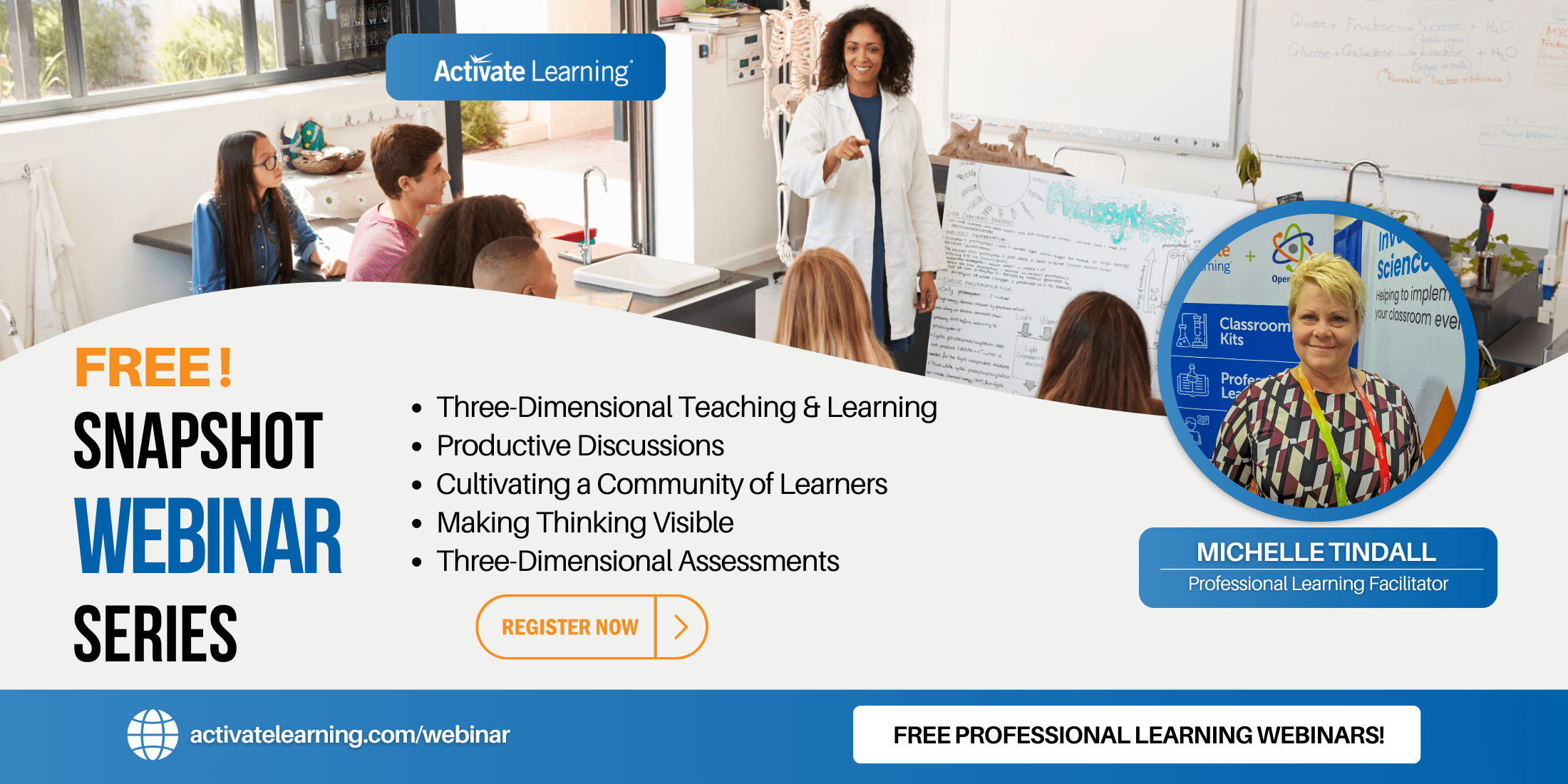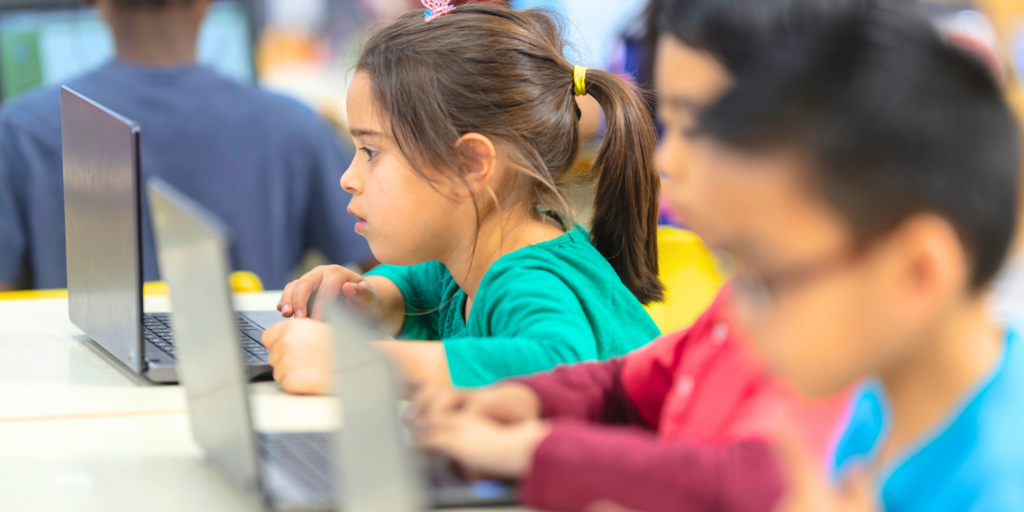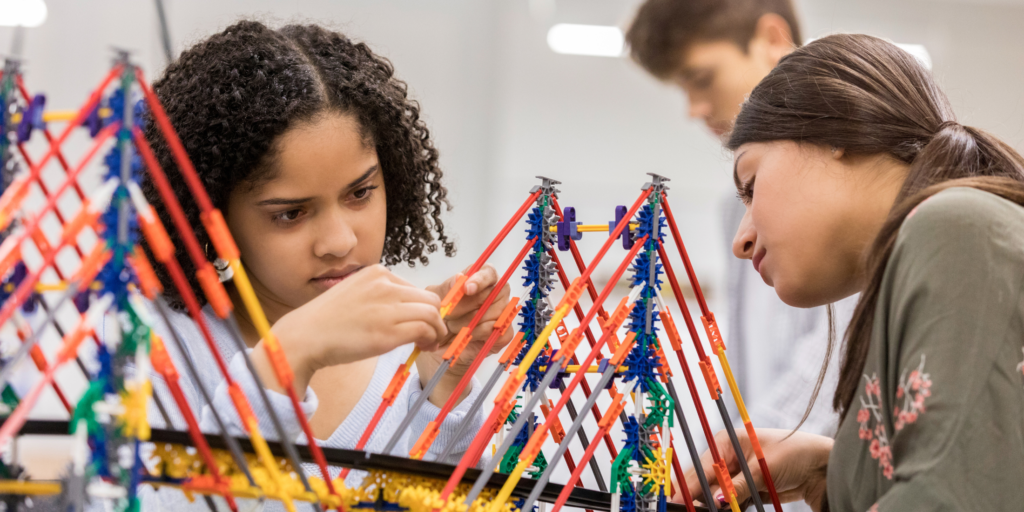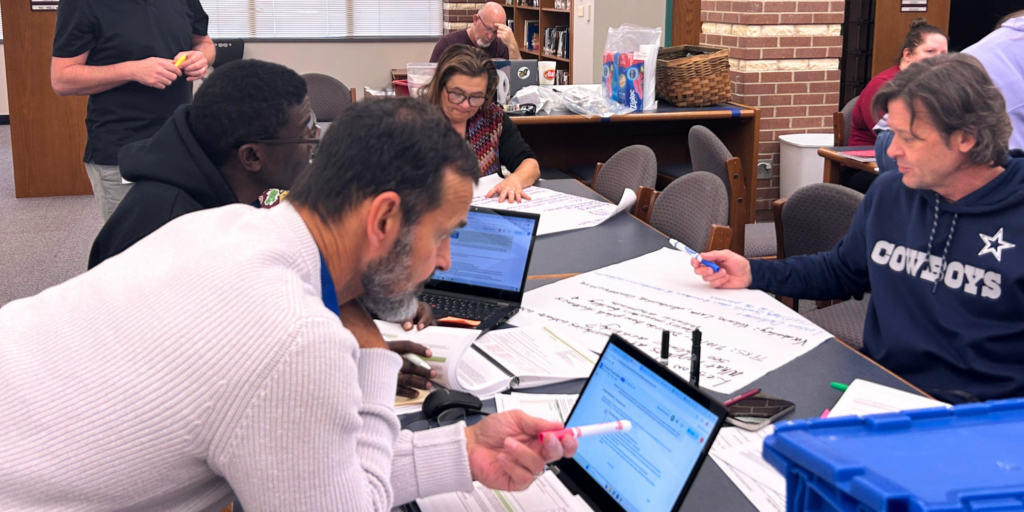What Are Notice and Wonder Activities in Science Education and How Do They Support Student Curiosity and Creativity?
What Are Notice and Wonder Activities in Science Education and How Do They Support Student Curiosity and Creativity?
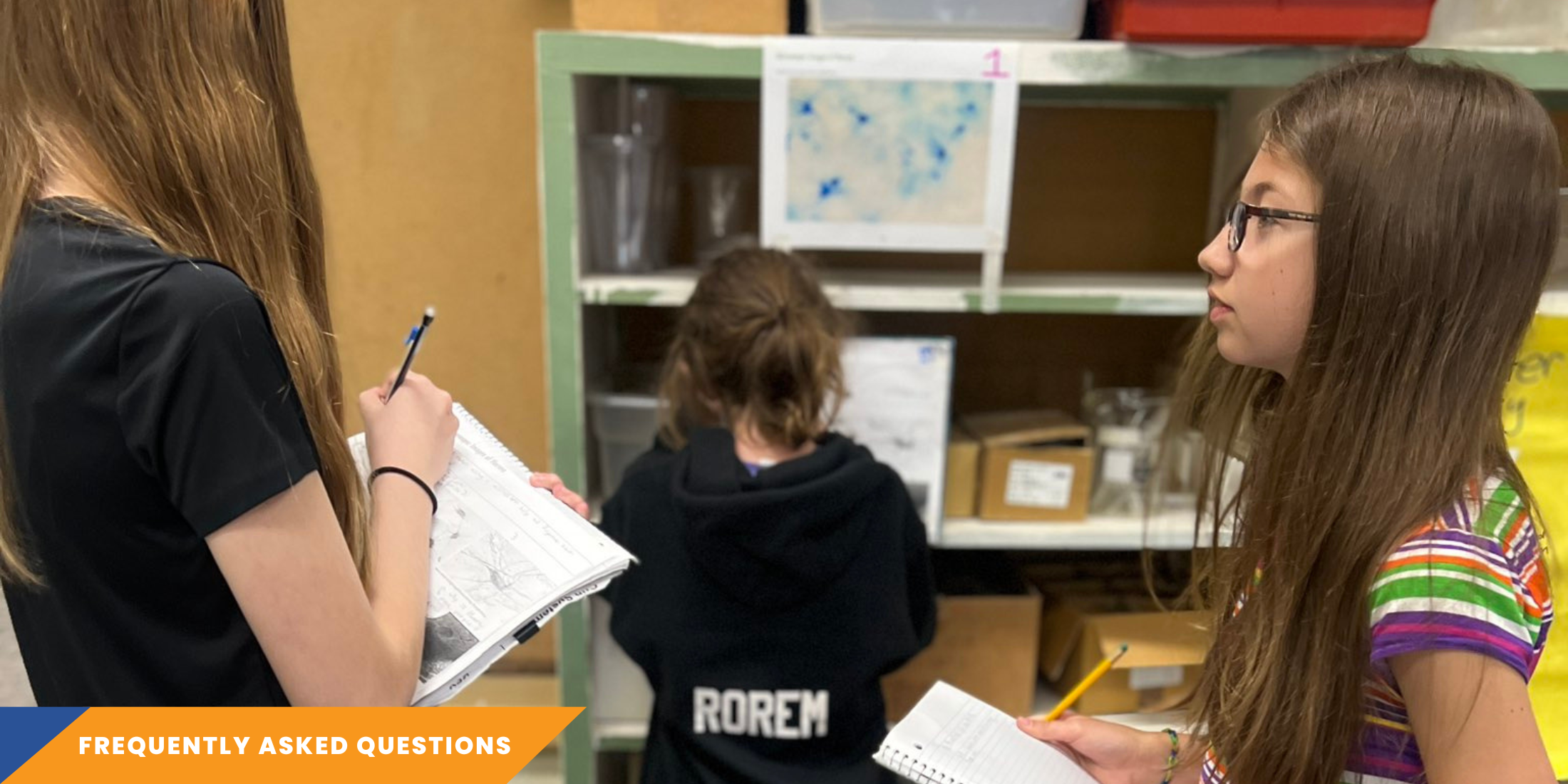
Quick Take: Learn how Notice and Wonder activities in science transform science education by fostering curiosity and critical thinking. This post explores the implementation of this versatile strategy across grade levels, from elementary to high school, as demonstrated in Activate Learning's K-12 curricula. Learn how this NGSS-aligned approach engages students in authentic scientific practices, supports creativity, and makes science more relevant and accessible. Gain practical insights and download examples of Notice and Wonder activities to take your science teaching to the next level! 🚀
What are Notice and Wonder activities in science?
“The best scientists and explorers have the attributes of kids! They ask questions and have a sense of wonder. They have curiosity. 'Who, what, where, why, when, and how!' They never stop asking questions, and I never stop asking questions, just like a five year old.” -- Sylvia Earle (Marine Biologist, Oceanographer)
Notice and Wonder activities are innovative teaching strategies designed to engage students in scientific thinking and spark curiosity about the world around them. At its core, this approach involves two main components: careful observation ("noticing") and generating questions ("wondering").
In a typical Notice and Wonder activity, students are presented with a phenomenon, image, or demonstration related to a scientific concept. They first share detailed observations without interpretation, honing crucial observational skills. Then, they generate questions and speculate about causes, nurturing their natural curiosity and practicing scientific inquiry.
The Notice and Wonder strategy aligns with the Next Generation Science Standards (NGSS) and 3-dimensional learning, incorporating Science and Engineering Practices (particularly asking questions and defining problems) and using Crosscutting Concepts as students make connections in their observations of phenomena.
This approach to science education differs significantly from traditional science instruction in several ways:
- Student-centered: Instead of the teacher presenting information, students actively engage with phenomena and generate their own questions.
- Low-stakes participation: There are no "right" or "wrong" answers when noticing or wondering, reducing anxiety and encouraging participation from all students.
- Activates prior knowledge: Drawing on what students already know or have experienced creates a bridge to new learning.
- Promotes scientific thinking: It mirrors scientists' actual process when encountering new phenomena, helping students develop authentic scientific practices.
- Adaptable: This strategy can be used across grade levels and topics, making it a versatile tool in science education.
The Notice and Wonder technique is both flexible and powerful. But how does it look in practice? Let's explore two different examples of Notice and Wonder activities, showcased in our recent webinar series.
How Are Notice and Wonder Activities Implemented in the Classroom?
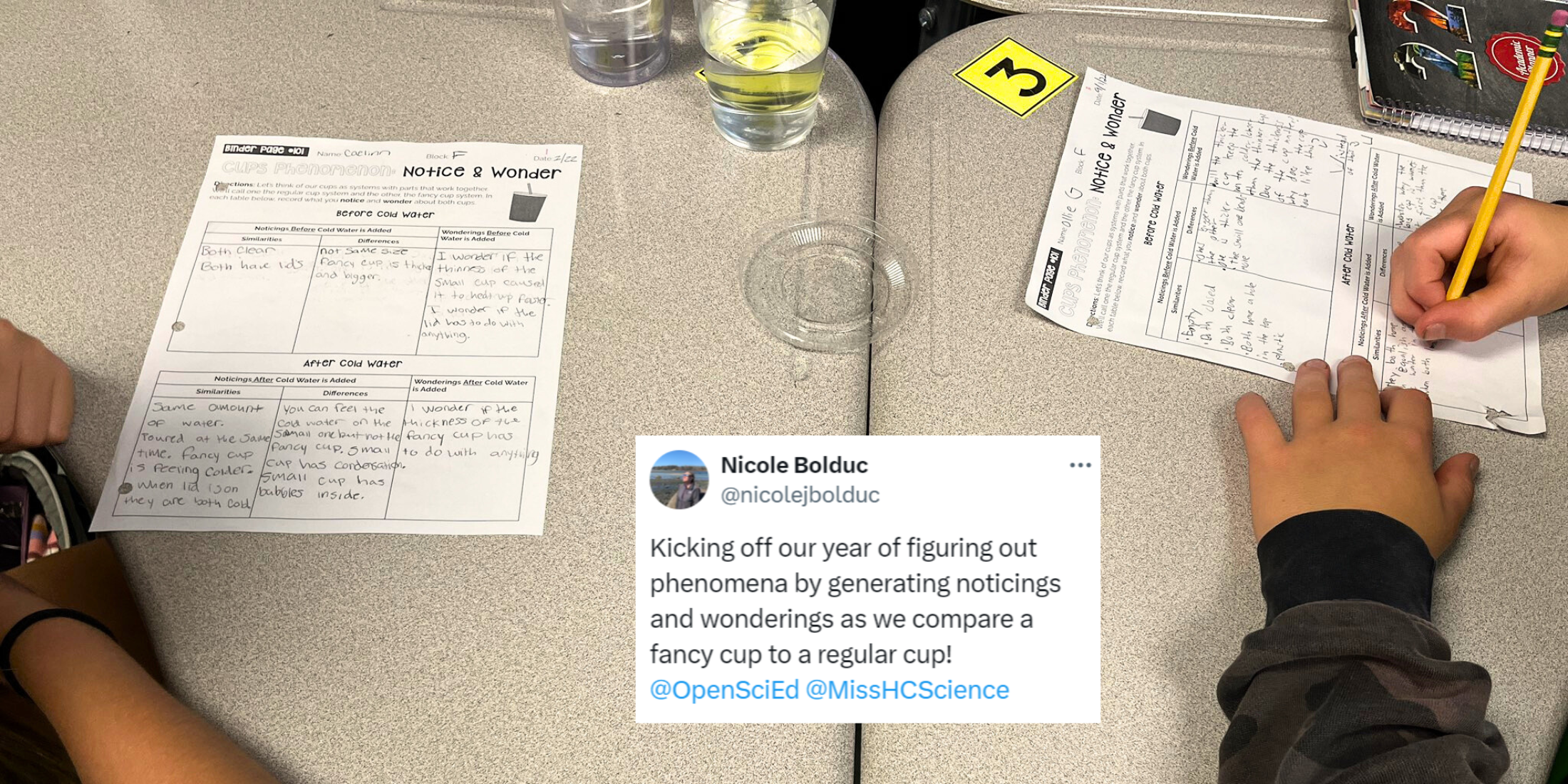
[Nicole Bolduc, 7th grade science teacher and OpenSciEd facilitator, shares how her students figure out phenomena using Notice and Wonderings activity.]
Notice and Wonder activities are versatile tools that can be adapted across grade levels to suit various student needs. Our 3-Dimensional Learning Snapshot Webinar series showcased two different implementations of this strategy, demonstrating its flexibility in practice.
Middle School
In the webinar Making Thinking Visible, presenter Rebecca Garelli demonstrated how teachers can support all students in writing and drawing for sensemaking using a See-Think-Wonder chart. During the interactive session, Garelli had participants observe a phenomenon and record what they saw in a See-Think-Wonder table, focusing on quantitative and qualitative observations. Participants then thought about what might be causing the phenomenon, drawing on prior knowledge. Finally, in groups, participants wondered about the phenomenon by generating questions about the phenomenon that can be investigated.
High School
In the webinar Productive Discussions in Science Classrooms, which explored how educators can use discussions to help high school students make sense of the world around them, Michelle Tindall presented a slightly different approach, Notice and Wonder. Webinar participants were shown a phenomenon (a video of lightning strikes) and asked to share what they noticed without interpretation using a standard Notice and Wonder chart. They then move directly to wondering, generating questions about their observations.
Both approaches emphasize independent thinking time before group sharing. The key difference is the additional 'Think' step in the middle school version, which may be particularly helpful for younger students as they develop their scientific thinking skills.
To implement Notice and Wonder, teachers typically:
- Present a phenomenon
- Guide students through noticing and wondering
- Facilitate sharing and discussion
- Collect and categorize observations and questions
- Use student wonderings to guide further inquiry
- Revisit and reflect throughout the unit
How Do Notice and Wonder Activities Support Student Curiosity and Creativity?
Notice and Wonder activities in science nurture students' natural curiosity and foster creativity in science education. By encouraging students to ask their own questions, these activities make science feel more relevant, personal, and engaging for students. When students generate their own questions, they become more invested in finding the answers, increasing overall engagement in science lessons.
Moreover, through careful observation and question generation, students practice critical scientific skills. They learn to look closely at phenomena, make connections, and formulate testable questions – all crucial aspects of scientific inquiry. The open-ended nature of these activities encourages students to think critically and creatively and approach phenomena from multiple angles.
Teachers can also gain valuable insights into students' prior knowledge and potential misconceptions through their "notices" and "wonderings," allowing for more targeted instruction. This approach mirrors how real scientists approach new phenomena, helping students see themselves as capable of doing authentic scientific work and building their confidence.

Where Can I Find Examples of Notice and Wonder Activities in Science?
We've compiled some valuable resources to help you implement Notice and Wonder activities in your classroom. Whether you're teaching elementary, middle, or high school science, these tools will support your efforts to engage students in authentic scientific thinking and discussion!
- Webinar Replay and Resources: Making Thinking Visible (middle school) [learn more]
- Webinar Replay and Resources: Productive Discussions in Science Classrooms (high school) [learn more]
- See-Think-Wonder Strategy and Chart Created by Rebecca Garelli [download]
- Teaching Slides: “Notice and Wonder” Example in Activate Learning PRIME Elementary Curriculum [download]
- Teaching Slides: “Notice and Wonder” Example in OpenSciEd Middle School Curriculum [download]
- Teaching Slides: “Notice and Wonder” Example in OpenSciEd High School Curriculum [download]
* * * * * * * *

